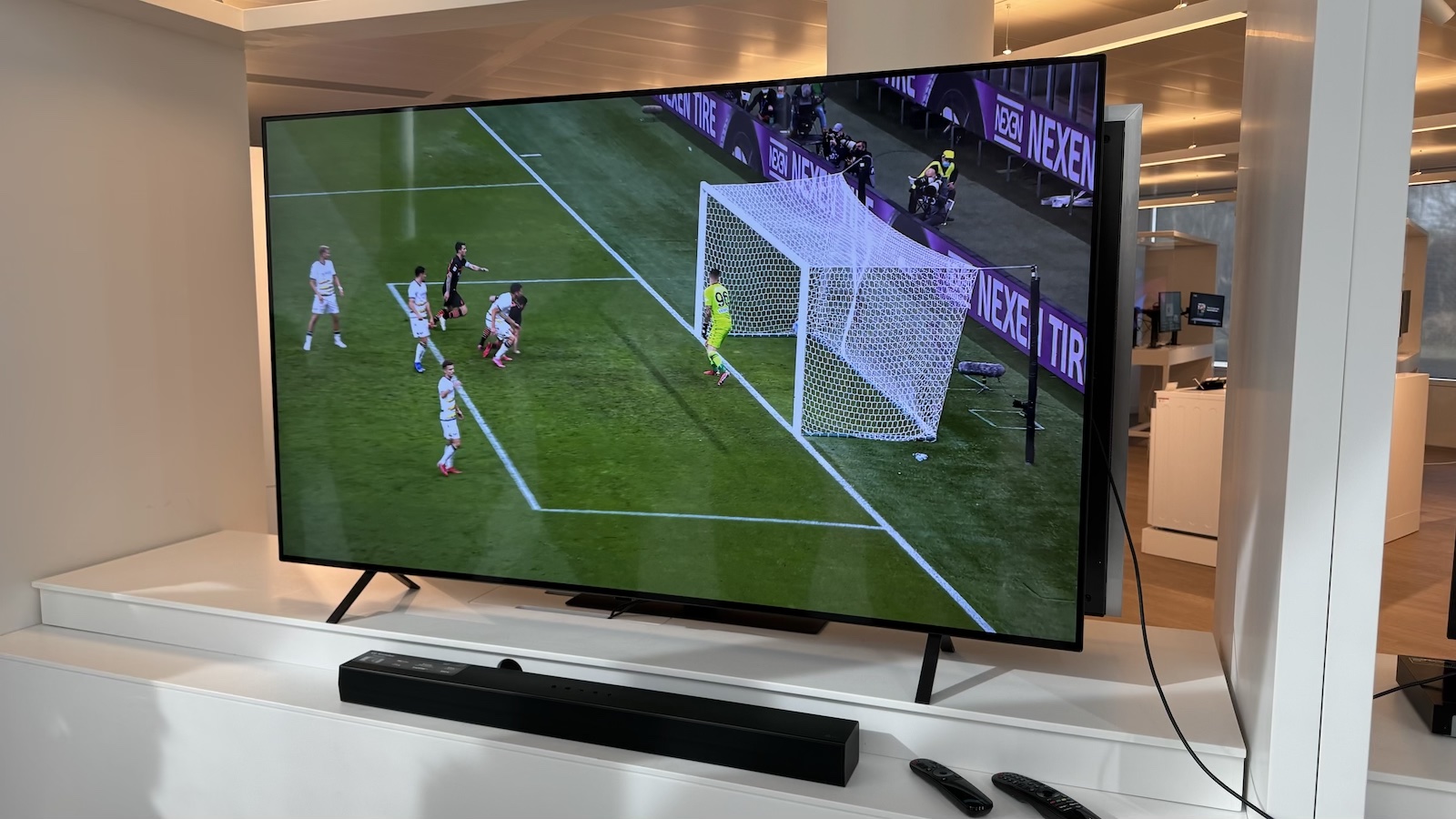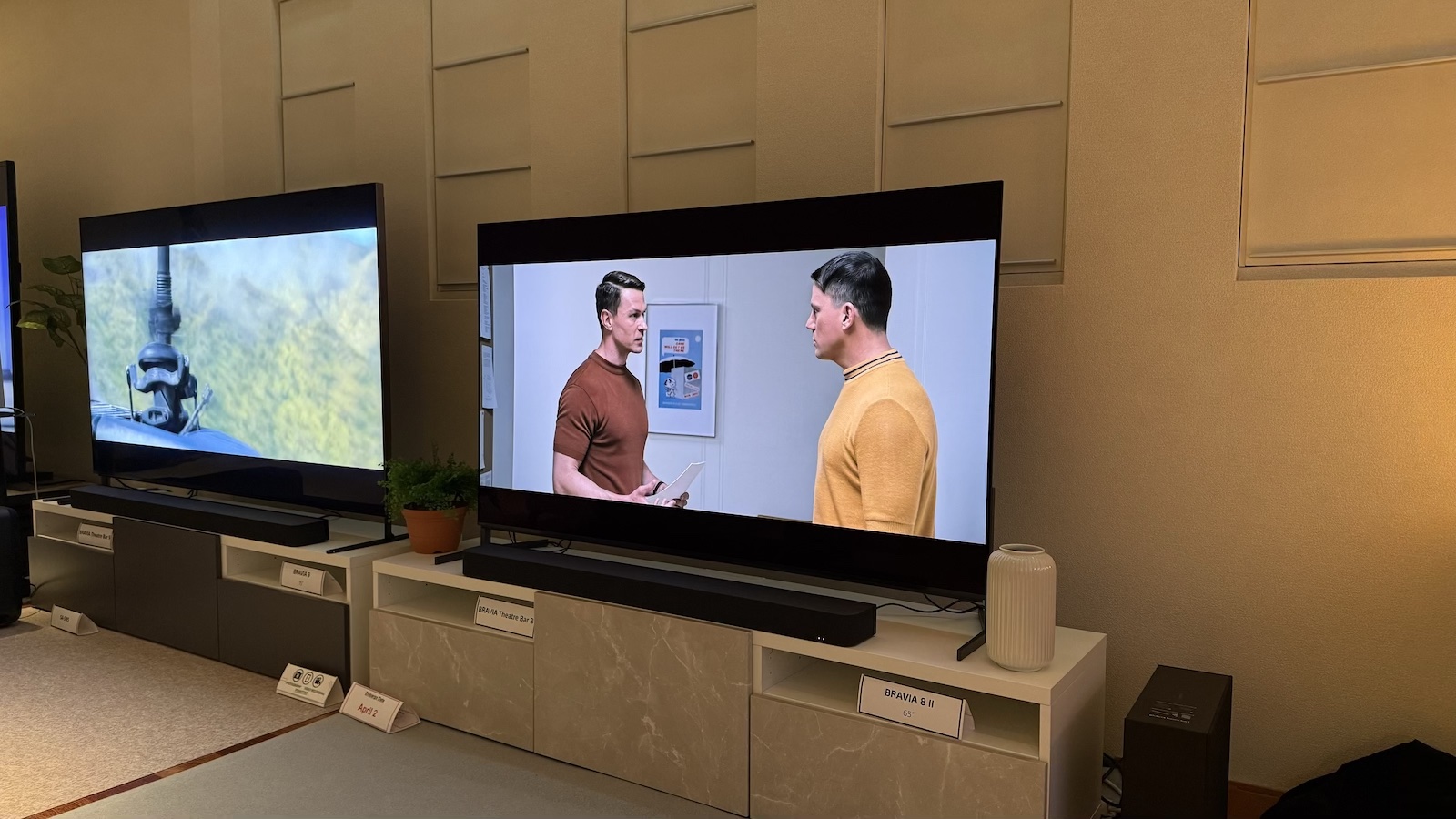Come on LG, Samsung and Sony: where are all the cheap OLED TVs we were promised?
Prices for 2024 are all but in, and all signs suggest we won’t see affordable OLED TVs any time soon

2024 is rapidly turning into a great year for OLED TV fans. Do a quick speed read of What Hi-Fi?'s latest coverage and that’s clear.
Let's run through the highlights. First up, we had CES 2024, where we got our first glimpse at Samsung, LG, Philips and Panasonic's latest flagship OLED sets. They all share one key theme – a focus on using powerful AI-powered processing *cough, Skynet* to improve picture and audio quality across the board. At the same event LG also showcased a new weird, but oddly enticing see-through OLED…
Robot overlords and potential gimmicks aside, CES also proved that the ongoing MLA vs QD-OLED grudge match between OLED TV makers is going to escalate markedly this year.
On the MLA side, LG Display has made some bold claims, claiming 3000 nits of peak brightness for the second-generation panel seen on the LG G4, Panasonic Z95A and Philips OLED909. For context, that is twice as high as the first-generation MLA tech we tested on last year’s LG G3, Panasonic MZ2000 and Philips OLED908.
Samsung also came out all guns blazing with its next generation S95D flagship. Like LG, Samsung claims its set offers substantially higher peak-brightness levels than what we saw on the S95C and Sony A95L last year.
If those claims on their own aren't enough to get you reaching for your wallet, if our first batch of 2024 OLED reviews are anything to go by, there's a lot of truth to them.
Testing the Samsung S95D, our reviewers found that Samsung has fixed the majority of the issues we had with the S95C’s colour accuracy and general picture quality, which is why the new set has earned a perfect five-star rating.
Get the What Hi-Fi? Newsletter
The latest hi-fi, home cinema and tech news, reviews, buying advice and deals, direct to your inbox.
The LG G4 also proved to be a massive step forward for OLED TVs, offering significantly improved motion-handling, a more-balanced, accurate picture and noticeably higher peak-brightness levels.
All of these are undeniably great positives. And yet here I am, reaching for my tiny violin, ready to play a sad, sad song rather than dancing with joy. It's because, in the sea of news and announcements, we are yet to see a key item that has been on every home-cinema fan’s wishlist for close to a decade: a truly affordable OLED TV.
Regular readers will know I have moaned about the lack of an affordable OLED TV for quite a while now. I wrote a similar old man rants at sky opinion piece on the topic just after CES in January.
And I am repeating myself here because, last week, LG put the final nail in the coffin bearing any hopes I had that we might see a good OLED that most people can sensibly afford, when it confirmed pricing for its new LG B4 OLED.
The B4 caught our attention for one key reason: its feature set is largely identical to the more premium LG C4. B-series sets traditionally come with significantly reduced features, including fewer HDMI 2.1 inputs and the use of older processors. The first of these was a particular annoyance, as it made B4 OLEDs a poor choice for next-gen gamers, who need the connectivity to take full advantage of the PS5 and Xbox Series X/S advanced features.
I had hoped, given the traditional pricing differences between the C and B ranges, that this would make the LG B4 significantly cheaper than its more expensive sibling. But no; the B still holds a premium price tag, with the base 55-inch model set to retail for £1499 / $1699 / AU$2499.
To be clear, I was never expecting it to drop to the hallowed £500 / $500 we take as a baseline for describing a TV as affordable. But I had hoped to see a drop indicating a general move towards more attainable OLEDs.
This is especially true, as LG has yet to offer any firm details on its next-generation A-Series OLEDs – usually the cheapest option in its line of TVs. Given the fact that the A-Series got only a very limited release and never made its way to the UK or US in 2023, we are far from convinced that a new A-Series set will appear at all in our native market this year.
To make matters worse, this trend also applies to Samsung, with its step-down S90D and S85D OLEDs, where pricing is roughly in line with LG’s. The same is true of Sony’s only new OLED this year, the Bravia 8: its price starts at £2199 / $2000 / AU$TBC for the base 55-inch model.
That means that, as in 2023, the only ray of hope left for buyers on a budget will be keeping an eye on older OLED models, which tend to get pretty decent discounts once the newer versions launch. You can see our picks of the top discounts doing the rounds using our best OLED TV deals guide. But even here we are yet to see OLEDs enter truly affordable territory. The cheapest 42-inch LG C3 is yet to drop below the £700 / $700 mark. The smallest 55-inch B3 is still retailing for in-excess of £900 / $900.
Based on our experience covering the OLED TV market, it is very unlikely we will see these prices go much more than a handful of percentage points lower, even during big sales events.
So, while we will have our fingers crossed and make sure to keep checking prices during sales key events, including Prime Day and Black Friday, as it stands all signs suggest we won’t see a cheap OLED TV arrive this year.
Here’s hoping for 2025…
MORE:
These are the best cheap TVs we have reviewed
We detail the best gaming TVs we have tested
Check out our picks of the best 55-inch TVs

Alastair is What Hi-Fi?’s editor in chief. He has well over a decade’s experience as a journalist working in both B2C and B2B press. During this time he’s covered everything from the launch of the first Amazon Echo to government cyber security policy. Prior to joining What Hi-Fi? he served as Trusted Reviews’ editor-in-chief. Outside of tech, he has a Masters from King’s College London in Ethics and the Philosophy of Religion, is an enthusiastic, but untalented, guitar player and runs a webcomic in his spare time.
